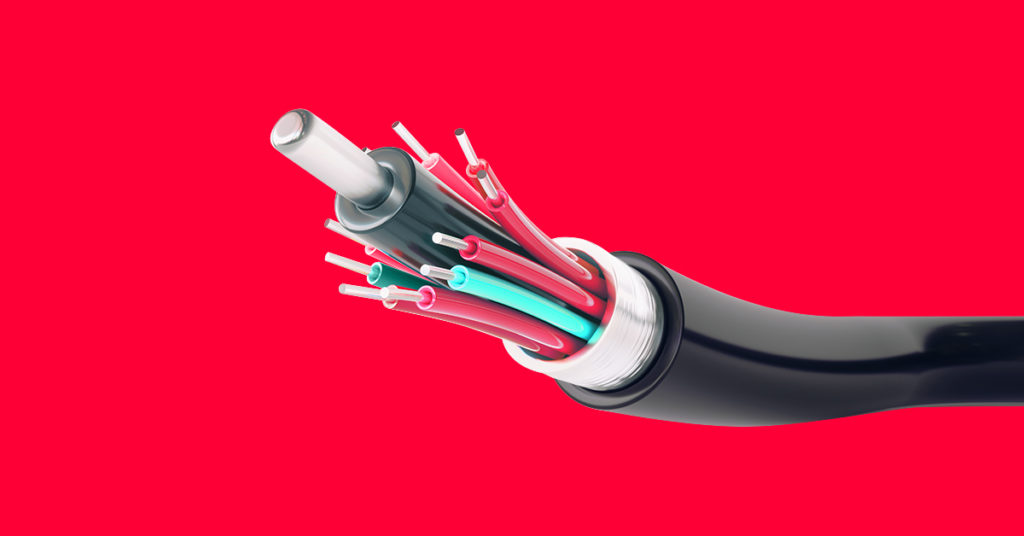
Can 5G Keep Up With 2 Gig Internet? How To Make the Smart Choice
4 commentsYou see the marketing: Faster, better internet is coming! Make the move to fiber with multi-gig speeds! Forget fiber and use 5G wireless! So, how can you decide? What’s the truth? Let’s step back and have a look at what both 5G and fiber have to offer right now. Then you can choose what’s right for your home and everything you do online.
The reliable service you know: fiber optic broadband
Fiber optic broadband is a high-speed fixed-line connection directly to your home. Your data travels at the speed of light, thanks to flexible fiberglass cables and, yes, lasers. It’s a significant upgrade from traditional cable, which relies on copper wiring to the home.
Fiber technology is the fastest way we have to transmit data over the internet. It’s what is used in the undersea cables that transfer internet data at ridiculous speeds between continents—up to 250,000,000 Mbps in some cases. (Even the 5G network is connected together with fiber optic cables.)
Now, you can’t get a 250 Tbps connection to your home just yet, but gig fiber is the real deal. Depending on where you are, you may be able to get a 1gig fiber connection (1,000 Mbps) or even a 2 gig fiber connection (2,000 Mbps). That’s fast enough to download the entire “Lord of the Rings Trilogy” in four minutes (and yes, those are the extra long “Special Editions” in 4K UHD).
The new unknown: 5G at-home broadband
5G is the fifth generation cellular service. 1G was cellular voice calls, 2G added SMS messaging, 3G added basic internet browsing and 4G made things faster.
5G is actually a few different technologies all bundled together. At the top, you’ve got millimeter-wave (mmWave), which operates at a much higher frequency than existing cellular networks. It’s what offers those wild peak speeds, but with a downside: It’s got a very short range and struggles to penetrate walls, windows and even foliage.
How fast your 5G at-home broadband connection is depends a lot on who your provider is and how far you are from a cell tower. Some providers claim to offer up to 980 Mbps download speeds, but according to CNET, in reality, most customers can expect to average 300 Mbps down and only 50 Mbps up. Some customers have it even worse. The best they can hope for is 115 Mbps down and 23 Mbps up.
Depending on your existing connection, even these speeds could well be an improvement, but they aren’t quite the incredible speeds being promised in some marketing campaigns. And if you’re holding out for 6G, you’ve got a long wait. It’s expected to launch commercially in 2030.
Fiber vs. 5G: the reality
In the future, your smartphone is absolutely going to use the 5G network, but for home broadband, today fiber has the advantage. You can’t function on 5G service as effectively as you can with fiber.
Fiber is 3 to 6 times faster than 5G services available right now.
While fiber and 5G can theoretically offer similar download speeds, gig fiber service is much more likely to deliver them in reality. With a 1 gig or 2 gig fiber connection, you’ll get an almost 1,000 Mbps or 2,000 Mbps connection (your carrier reserves a few Mbps for network overhead).
Fiber offers symmetrical upload and download speeds. 5G does not.
Upload speeds can be important if you have a lot of Zoom calls, back up your files online or upload videos to YouTube. Fiber offers close to symmetrical download and upload speeds. So, that 1 gig connection? That’s nearly 1,000 Mbps download and 1,000 Mbps upload. 5G, on the other hand, can’t come close to those speeds.
Fiber internet will perform in a storm.
Fiber is designed to be weatherproof and stormproof, and while 5G networks look set to be better than previous networks when bad weather hits, experts say they still have work to do.
Fiber guards against buffering.
One of the most desirable advantages of fiber is its increased bandwidth that can bring higher speeds into the home faster. With more bandwidth available, gamers, video chatters and avid streamers will have more to share with each other in real time. A fast fiber connection with the most up-to-date router sets you up for success.
Fiber offers more for the price.
Value-wise, fiber also has the edge. While most 5G and fiber plans fall in the $50 to $100 range, fiber can give you up to 6 times the download speeds and up to 40 times the upload speeds that 5G can provide. That’s a lot more speed—symmetrical speed—for your buck.
Fiber is hard-wired into your home.
With fiber to the home (FTTH) your fiber cable comes directly into your home and connects to a router. You don’t have to place a receiver in a window, think about lines of sight or otherwise worry that you’re not getting the fastest speeds from your internet connection.
The Frontier fiber and 5G future
Fiber and 5G are both great technologies that can revolutionize how we connect to the internet. But today, make sure you have Frontier Fiber for the best internet possible right now. Fiber still offers faster speeds–and symmetrical speeds. To find out how to make the most of your online experience here. And to see when Frontier Fiber is in your area, check here.




I’m willing to bet the latency and jitter on 5g is no comparison to fiber as well.
That’s right! Wireless tech has great error correction, but lost packets must be resent, which increases both latency and jitter. There’s a reason fiber is the back haul wireless towers!
I find it crazy that you keep touting these incredible speeds unless there are other people using the same fiber line ( much like a party line of days gone past) that drastically slows down your up load speed. .
Can you address the elephant in the room directly .
Hi John, I’m not sure what elephant you might be speaking of because party line style shared bandwidth is not at all how our GPON or XGS-PON architecture works. The fiber infrastructure is a distributed fiber network in which a feeder optical fiber is split into several branched optical fibers so it’s physically shared, but whether there is 1 or dozens of active connections downstream they all have the same time interval to send/receive their optical signals thousands of times per second. A connection with only one active user has the same interval as a neighborhood that’s full of users. Each of those connections on our XGS-PON network is capable of up to 10GB/s symmetrical bandwidth. We have speeds available up to 2Gig right now and most of our customers find that the provisioned speeds are even higher and with capacity of 10GB/s it should prove future proof for a bit. The physical architecture has theoretical capabilities exceeding Petabits/s making it even more future proof. If you have any other questions about it, don’t hesitate to ask!